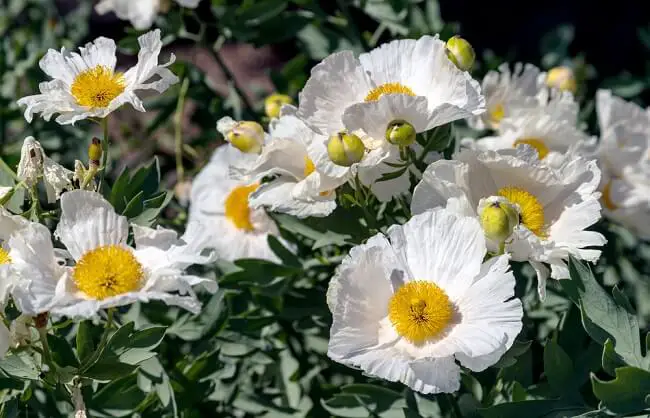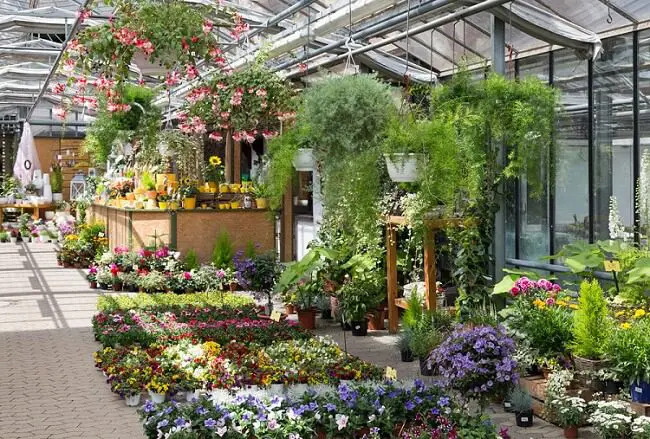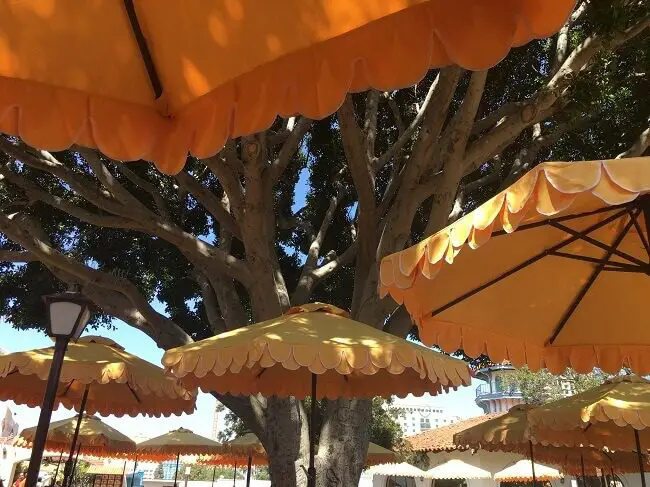Drought Tolerant Lawn Alternatives
Fortunately, there are many choices for homeowners who are looking for drought tolerant lawn alternatives. After ditching the grass, some popular replacement options include:
- A vegetable garden
- Wild grasses such as blue fescue
- An easy wildflower garden
- White clover which has the green soft feel of grass
- Hardscape elements such as patio or decking
- Hardy ground cover such as ice plant
- A xeriscaped design of native plants and trees
Since the weather is wonderful, many grass replacement choices do very well in San Diego. But the flip side of the coin is our dry climate. A strong focus on drought tolerance when mapping out your new design will set you up for success.
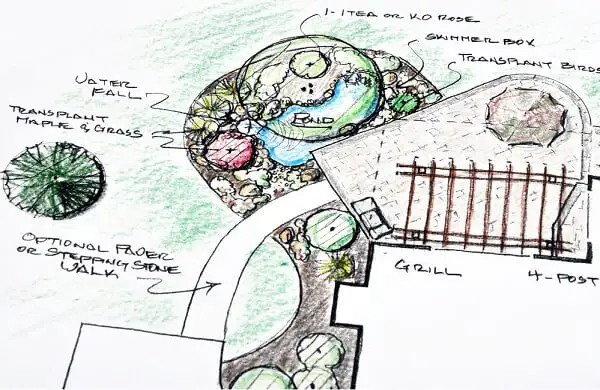
Table of Contents
How do I replace my lawn with drought tolerant plants?
The first step to lawn replacement is making a plan. You’ll feel more prepared for your project by following some simple guidelines.
- Decide which area/s of grass you’d like to replace.
- Consider which elements you’d like to use in the space.
- Make a list of the plants, trees, and accessories you’d like to have.
- Sketch out an example of how things would fit into your area.
- Be aware of how big plants will be at maturity — avoid over populating your space.
- You’ll also need a plan for physically removing the lawn or killing it.
- Plan to replace spray irrigation with water-wise types such as drip or bubblers.
Once you’ve planned out the steps you’ll take to replace the lawn with drought tolerant landscaping, it’s time to implement. But first, if you’ve got an existing lawn, you’ll need to remove it.
*This article contains affiliate links which means if you make a purchase, we earn a small commission.
How to remove a lawn
There are several ways to get rid of a lawn, and the method you choose will depend on a few things: your physical strength, whether you can afford to have it done for you, or if you’ve got time to spare for the slower methods.
Common ways to remove your lawn
- Physically digging it out with tools (best for a small area).
- Renting a sod cutter to cut strips which can be rolled and removed.
- Hiring a landscape company to remove and dispose of it.
- Layering cardboard and newspaper on top to smother it.
- Using heat from the sun by covering tightly with plastic to kill it.
- Poison herbicides which we won’t cover in this article.
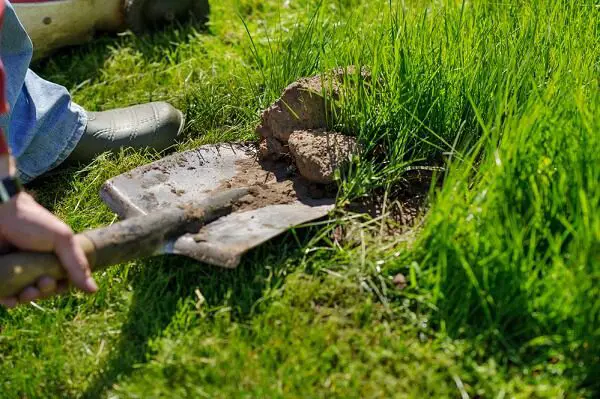
Labor-intensive lawn removal
The two labor-intensive ways to remove your turf are physically digging it out with a shovel and renting a sod cutter to cut it into strips that can be rolled up and moved out.
Doing it by hand is best for a very small area. It’s backbreaking work and can be hard to get all the roots out.
Renting a sod cutter will likely help with a medium sized area of lawn but it’s hard work to operate the machine, costs money to rent it, and takes a truck for transport to your house.
If you decide to go with the more physical removal, we found a great tutorial for taking out grass in strips that doesn’t involve renting expensive equipment.
This video shows how to use your own circular saw to cut and roll sod for removal. And the bonus is that this guy had no problem getting rid of his rolls of sod by listing it for free on Craigslist. So the disposal was free!
Smothering methods for destroying sod
Two other options are smothering grass with layers and layers of cardboard, newspaper, and other compost materials or burning it through plastic using heat from the sun.
Things to consider with these methods are: they can take months before the grass is dead, there’s a good amount of work involved, and you’ll have to find or buy the materials to put on top of the grass.
These smothering methods are also quite ugly. You’d need to be prepared to have a large patch of grass or your entire lawn covered with weird looking stuff for possibly months to kill the sod completely.
The easiest and quickest way to remove a grass lawn
The most pain free method for getting rid of your lawn is to hire the professionals to come and do it for you. There are many landscaping companies who are willing to dig it up and haul it away so you don’t have to.
There aren’t many downsides except that it costs money. However, the grass will be removed faster and more thoroughly than if you try to do it yourself.
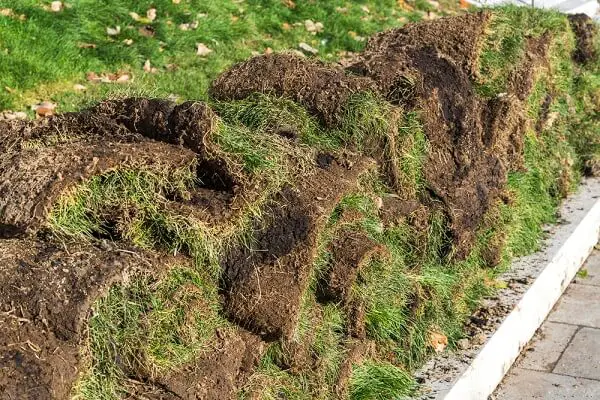
Water wise irrigation
Water wise irrigation is a method of watering plants, trees, and vegetation with small concentrated amounts of water that are directed right at the root of the plant where every drop can be utilized. Drip systems are the stars of water-conserving irrigation.
The most common type of irrigation is a sprinkler system that has a broad spray to cover the surface of a lawn. It’s very water intensive and can waste plenty of water with runoff and/or evaporation.
For a drought-tolerant or xeriscaped area, you’ll need a more efficient and gentle way of irrigating. Leaving sprinklers in place that spray wide areas can kill or overwater your new plants and will thwart your plan to save water.
No matter what type of irrigation you choose … everyone needs a hose.
This Flexi Hose is the best thing I’ve ever bought for my yard and patio!! I’ll never have another regular hose again. If you hate fighting with a heavy hose that takes up a ton of space … you’ve got to see my hose!
Surface Drip Irrigation System
Drip irrigation systems are a great choice since they efficiently water plants at their root via a network of tubes and spouts (emitters). The water trickles out slowly, therefore providing a deep watering with no runoff or evaporation waste.
A surface drip system can be placed above ground so you won’t have to dig or bury anything. Just set up the series of tubes and spouts near the plants that need watering, and cover with a little mulch to protect it from foot traffic and sunlight.
Surface drip irrigation systems are very easy to install yourself. They’re quite economical as well. You’ll be pleasantly surprised to find an entire drip kit like this one for well under $100.
If you’d prefer to bury the drip irrigation, that’s another option as well. Just be aware that it takes a fair amount of work and time if you’re not experienced.

Bubbler Irrigation System
A bubbler irrigation system uses a series of tubes with attached sprinkler heads called bubblers. They carry water straight to the base of the plant or tree with a gentle umbrella-like flow.
You might choose a bubbler system over the drip method if you have plants or trees that need a higher volume of water. They offer a good variety of water flow rates and spray patterns.
Bubbler irrigation systems are also economical and easy to install. Plan out which plants need watering and lay out your main water line in that area.
The smaller tubes are connected to the main line and extend to the individual plants to be watered. All that’s left is to adjust the water flow and cover the tubing with some mulch if you’d like.
What can I use instead of grass?
There are many grass alternatives if you’re looking to switch from a thirsty lawn to a water-wise outdoor space that everyone can enjoy. The following drought-resistant options look great and are low maintenance.
- White clover can provide the lush green you’re looking for and it’s great at choking out weeds.
- Replace a standard lawn with a large patio or deck using heat-loving plants or pots as a border.
- Try a xeriscape design that incorporates rock gardens, wild grasses, and flowering succulent plants.
- A wildflower garden is as easy as breaking up the soil a bit and scattering seeds.
- Vegetable gardening can save water and provide food — a win/win.
Ground cover plants that are drought tolerant also make terrific grass replacements. There are dozens of varieties that spread well, look great, and even tolerate some foot traffic.
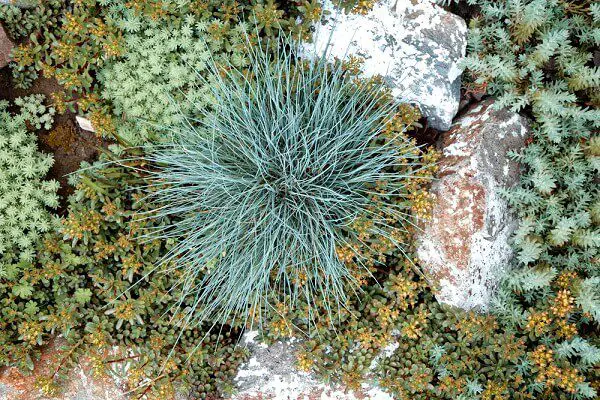
Lawn look-alikes
Kurapia Sod — This turf alternative is low maintenance and has the lush green appeal of regular grass without being a water hog. It’s small leaves resemble clover just a bit and it does flower if you want it to. Otherwise, you can keep it mowed short for a nice carpet of green
UC Verde Buffalo Grass — UC Verde holds up well to foot traffic and has a nice soft feel to it. This buffalo grass variety was bred here in California specifically for our dry and arid climate.
It’s slow growing and uses about ¼ as much water as regular grass. You’ll save money on your water bill and won’t spend weekends mowing.
**This turf often qualifies for a turf replacement rebate offered by our local water authority. Check this site for more information and to apply.
Native Bentgrass — This great lawn alternative has thin blades that grow long and flop over unless you want to keep it short. It almost looks like a meadow in the countryside. Very soft to walk on and it holds up well to moderate foot traffic. Bentgrass is very heat and drought resistant, so it’s a perfect match for San Diego’s weather patterns.
Zoysia grass — Creates a lush carpet of green that’s very drought tolerant and doesn’t need a lot of mowing. It has a very soft texture and holds up well to foot traffic. Zoysia prefers a lot of sun, so it may not be great in shady areas under trees. This grass also grows very thick and does a great job of choking out weeds.
Final thought …
Replacing a thirsty lawn with a drought tolerant alternative can be a big endeavor. But the water savings plus your excitement for the newly designed outdoor space will hopefully be worth all of the planning and work that went into it.

